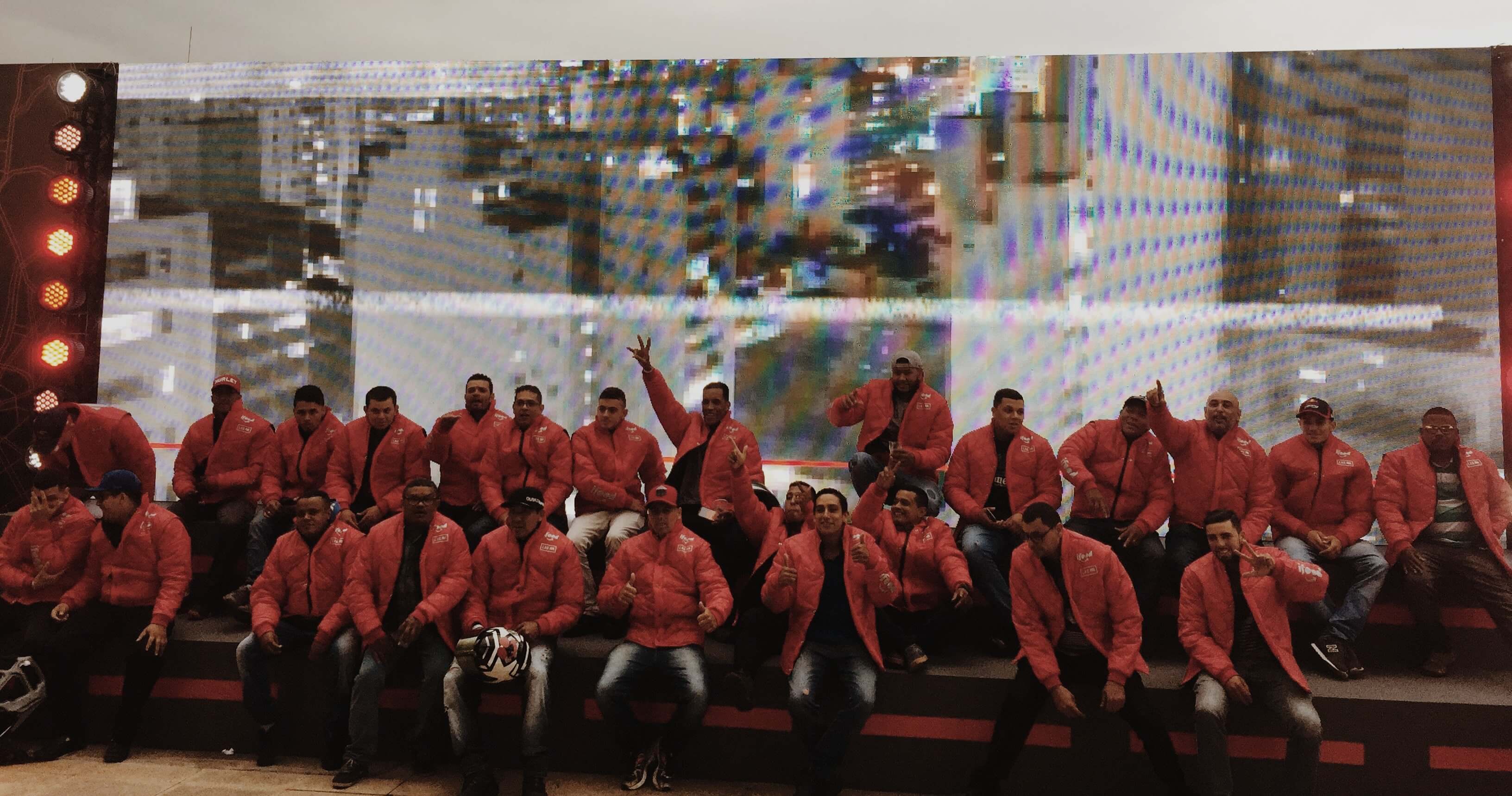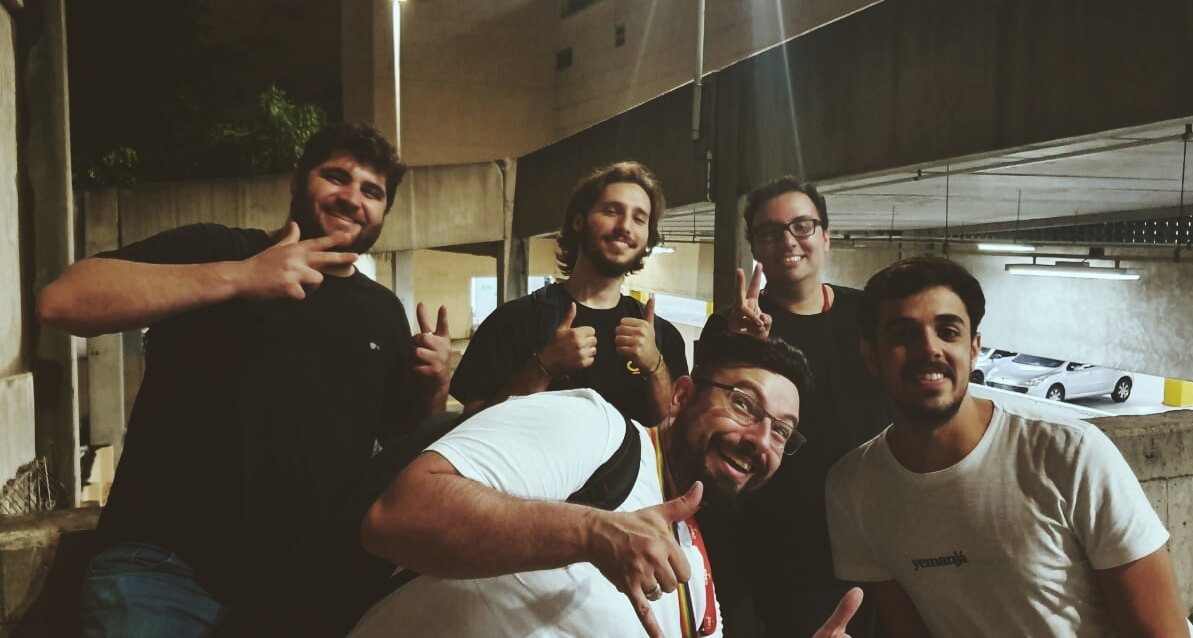Shaping the driver app v1
When I joined the iFood team, there was already a development version of the driver app. By then, the folks working on it were primarily concerned about the overall system design and infrastructure rather than usability and go-to-market. The logistics operation at that point wasn't entirely reliant on the app, so they could afford the app being a bit all over the place. However, concerns about usability and design grew as the fleet expanded rapidly.

That’s how the app looked at the beginning. You can see it was pretty bare-bones. I used to spend most of my time in this early stage just doodling around, sketching potential versions of the future. It was also an opportunity for me to get deeper both into the infrastructure the team was building as well as into the maturing operations. All of this domain knowledge would be invaluable to design.

Infinite rectangles. It got to the point where a 16 GB RAM MacBook Pro couldn't handle the Sketch file.
Setting up the app
iFood was already a big company at that point, but my team specifically was not. It was almost a startup-inside-a-startup sort of vibe. Me as the designer, two Android developers, and a PM—that's it. That allowed us to move much faster and collaborate more. We were all trying to figure out what we wanted to bake into the app's first version: must-have features, nice-to-haves, etc. It was a great moment to get out on the streets and have actual conversations with drivers.

This is legit proof I'm a real designer. I call post-its my strategy.

Spoiler: Turns out I ended up working at Loggi, too.
Launching and learning
We managed to do a complete design overhaul of the app while focusing initially on the driver’s most important flows, like quickly checking their daily earnings, choosing which vehicle they’d be driving (we supported bicycles and motorcycles back then), and so on.

Delivery journey
Much care and focus was put into the most critical flow: the delivery journey. That's when drivers could accept a delivery request, see the pickup address, understand what they'd need to get, and then deliver it. Lots of moving pieces there—a very time-sensitive flow. I'm proud of this because it looks way simpler than it actually is if you have a view of the whole system that's running behind it so that all the stars align.

Other surfaces
We definitely wouldn't let a redesign opportunity slip by! So we also took some time to structure some tangential parts of the experience, which weren't the most critical flows but were as important as anything else, such as support requests, connecting to the payment machine, effectively receiving the payment, etc.

Measurable results
2.3 to 3.5 rating score at Google Play
This can seem like too little, but it is a huge improvement. Drivers heavily use the Play Store as a channel for complaints. To increase this score, complaints needed to be down, and praise needed to be more frequent. And we did it in a short time frame. It was after 3 months of the new app launch that we saw these figures increase.
8k to 90k rating active drivers
The onboarding flow we designed cleared the way for this to happen. The numbers are constantly growing, and I'm sure they are way higher than that by now. But again, we noticed this increase quickly. A simple and effective onboarding flow, both driver-wise and operation-wise, made this possible.
15% to 28% rating of Logistics share in the whole Market Place
A primary signal of the Logistics tribe's success was how much share it had compared to the central marketplace model. That bump was another natural reflection of a growing fleet and a more amplified and delightful experience for drivers.
Non-measurable results
Team ownership
We became verified references company-wide when it came down to drivers. We got to know them and the Logistics operation down to each detail. That built a lot of trust and confidence in our work. We also became more assertive when it came to launching product features.
Driver engagement
Frequently, we would mobilize many teams to align and launch stuff. I think we successfully engaged different teams with different contexts and goals to reach a particular outcome focused on the driver.

This photo is from an event we threw for drivers where a famous local rapper wrote a song for them. It was super cool and an incredibly memorable day!

The glorious driver app crew!